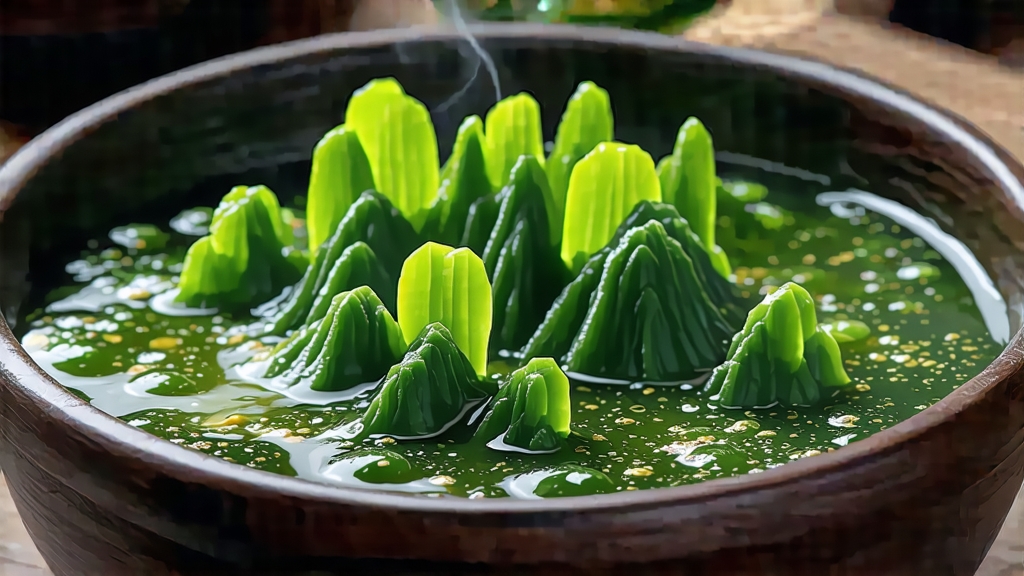
Tie Guan Yin, literally “Iron Goddess of Mercy,” is the most celebrated among China’s oolong pantheon. Born in the granite-studded hills of Anxi, southern Fujian, this tea has moved poets, merchants, and emperors for almost three centuries, yet every spring it reinvents itself in the hands of new artisans. To understand it is to witness a dialogue between rock and cloud, between charcoal fire and night breeze, between human devotion and botanical memory.
History: From Bodhisattva to Brand
The legend begins around 1736, when a devout farmer named Wei Yin nightly dreamt of Guanyin, the goddess of compassion, pointing to a gnarled shrub behind his rammed-earth house. Upon waking he found a tea plant whose leaves exuded an orchid fragrance so penetrating that village monks used the infusion to stay alert through marathon sutra recitations. The Qing Qianlong Emperor, tasting a tribute parcel, declared its rolled leaves “heavier than iron, greener than goddess jade,” and the name stuck. By the late 19th century Anxi caravans carried Tie Guan Yin across the South China Sea to Singapore, Penang, and eventually Chinatown apothecaries in San Francisco, where it became the aromatic bridge between homesick miners and the homeland they might never see again. In 1985 the Chinese state listed it among the first “Famous Teas of China,” and today more than sixty percent of Anxi’s 800,000 residents derive income from this single cultivar.
Varieties: One Name, Many Faces
Modern market taxonomy divides Tie Guan Yin into five stylistic families, each a response to shifting consumer palates and climate.
- Traditional Roast (nong xiang): 30-40 % oxidation followed by three charcoal bakes over peach-pit charcoal. Liquor is amber, nose of toasted sesame and dried longan, finish reminiscent of Mexican cinnamon.
- Modern Green (qing xiang): 15-20 % oxidation, no charcoal, only low-temperature convection drying. The cup glows jade-green; aromatics recall fresh gardenia and honeydew.
- Moderate Roast (xiao qing): a compromise style, light charcoal kiss at 60 °C for two hours, preserving florals while adding a wafer-thin layer of nuttiness.
- Aged Tie Guan Yin (lao cha): stored in double-fired clay jars for five to thirty years; periodic re-roasting drives moisture out, catalyzing a mellow, camphor-like sweetness prized by Chaozhou financiers.
- Wild Tie Guan Yin (ye sheng): harvested from seed-propagated shrubs escaped from plantations; leaves are smaller, oxidation is uneven, flavour oscillates between pine sap and wild orchid—an acquired taste that commands collector prices.
Terroir: Why Anxi Tastes like Anxi
Anxi County sits on the 25th parallel north, where granitic parent rock weathers into acidic red soils rich in iron and manganese. Morning fog rolling off the Xijiang River slows photosynthesis, boosting amino acids, while the 600–800 m elevation subjects leaves to a 10 °C diurnal swing that concentrates aromatic volatiles. Microbially, the air carries a unique strain of Brettanomyces yeast that inoculates withering bamboo trays and contributes a faint pineapple note detectable only to trained cuppers. In short, you can replicate the cultivar in Yunnan or Taiwan, but the cup will lack the “rock rhyme” (yan yun) that Anxi locals swear they can hear as a lingering hum on the soft palate.
Craft: The Choreography of Green and Fire
Harvest begins when the morning dew still weighs down the third leaf from the tip—usually between 9 and 11 a.m. to avoid overnight chill. Leaves are spread on bamboo sieves called shai qing for three hours of wilting, during which 8–10 % moisture evaporates and grassy aldehydes volatilize. The critical shake (yao qing) follows: 8–12 minutes of rhythmic tossing in a rattan drum that bruises leaf edges just enough to let polyphenol oxidase meet catechins, turning rims reddish-brown while keeping the leaf center emerald. Oxidation is arrested by a 230 °C tumble in an electric wok for four minutes; masters listen for the sound of hand-clap fireworks that signals cell walls rupturing.